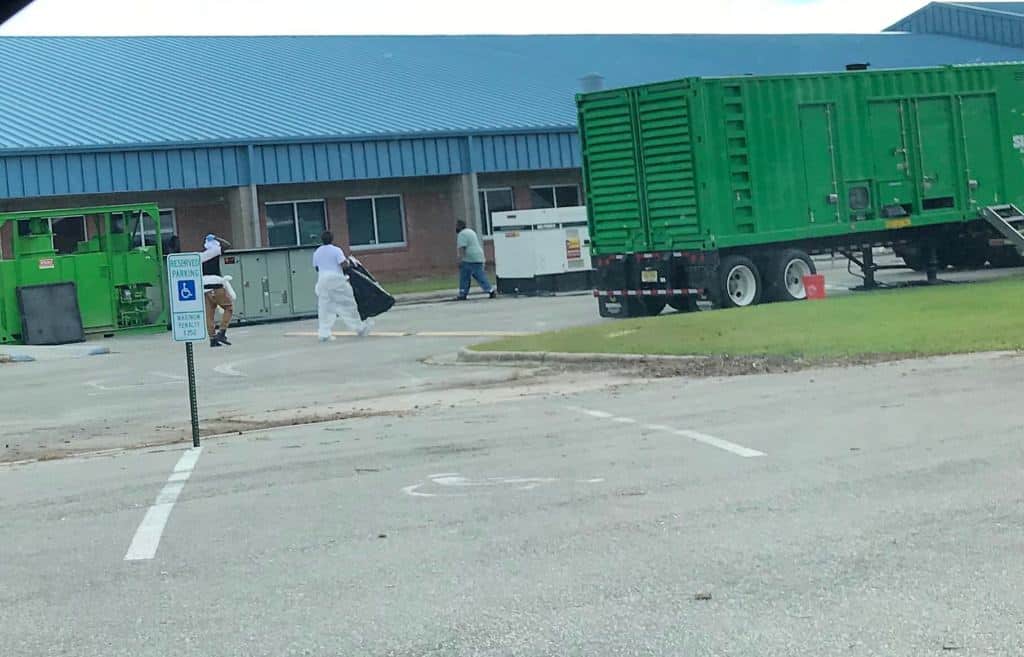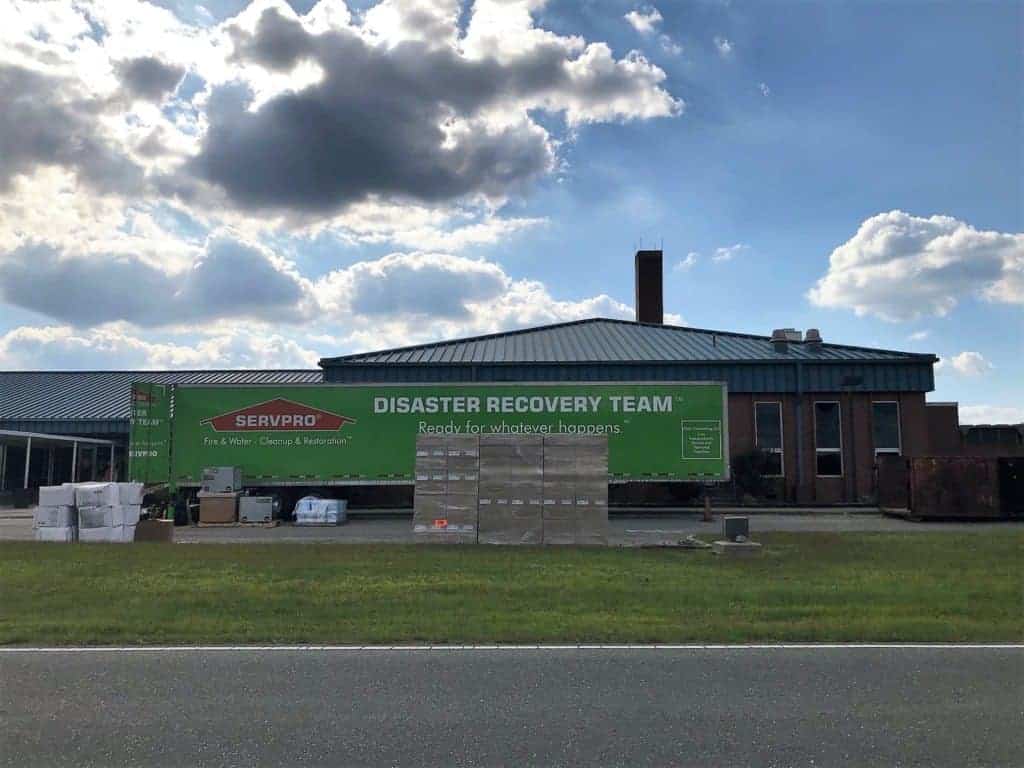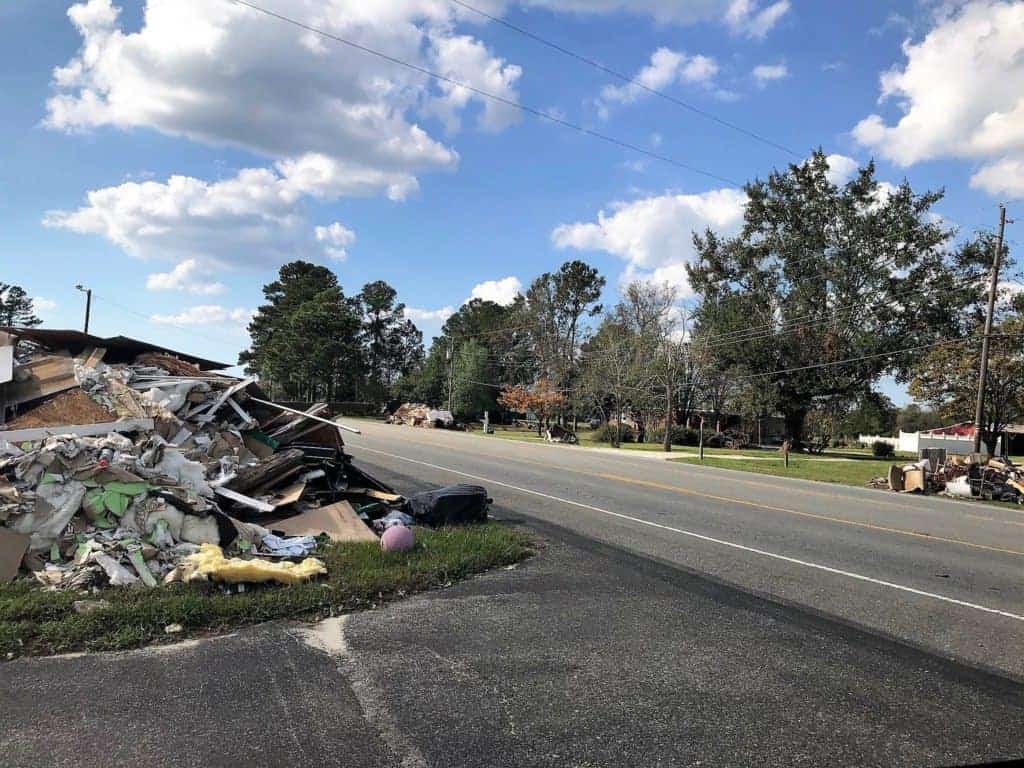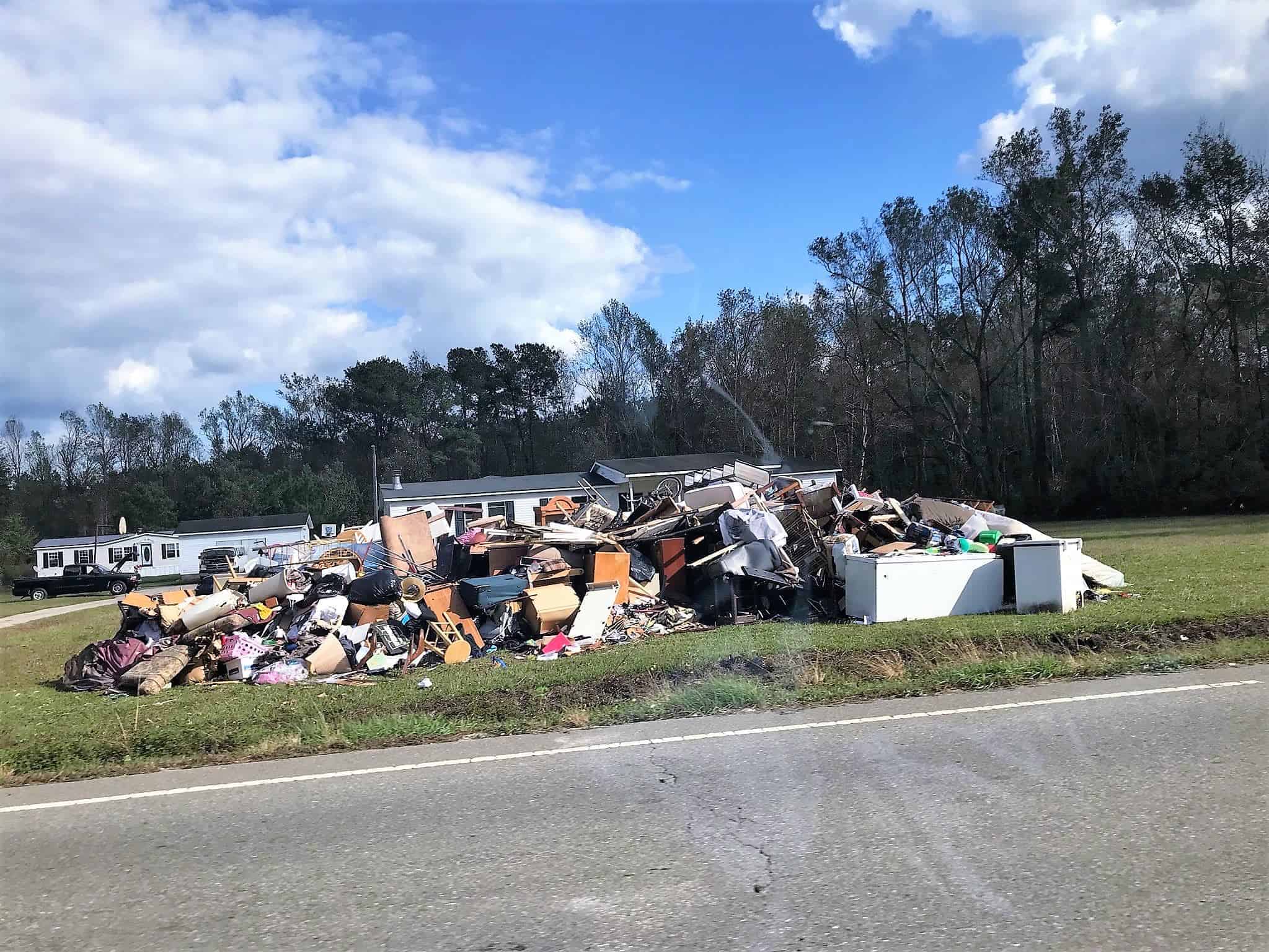The drive down Highway 41 from Wallace to Chinquapin is heartbreaking. And it’s just one example of gutting loss in the battered communities of Duplin County.
Houses, lined up on either side of the road, are the backdrop for the surreal sight of piles of residents’ personal belongings, insulation, and dry wall sitting on the curb waiting to be hauled away. This is a small window into the wreckage from a storm unlike most in this community have seen before.
The massive loss is pervasive throughout Duplin County, so while school officials were hoping to get schools back in session October 9, it cannot be too surprising that repairs and restorations are taking longer than anticipated, delaying the re-start of schools for a week.
“Our Board of Education has done everything within its capabilities to help us get back to school as soon as possible,” Superintendent Austin Obasohan said. “We have missed our students and look forward to seeing them and helping them return to a sense of normalcy. It will take time and strength to recover from Hurricane Florence.”


Students were released on September 11 and scheduled to return October 15. In the meantime, as is or was the case for so many schools in neighboring counties, licensed professional contractors, adjusters, and others are working 24-hour shifts to complete the restoration of all schools, which includes air quality testing, surface testing, and repairs. School system maintenance and other staff members are also assisting in the widespread efforts—as each of the 13 public schools in Duplin County sustained some structural damage.
What makes things in Duplin difficult is the need for focus on recovery.
Florence dumped as much as 30 inches of water on southeastern North Carolina. It caused extensive flooding in 27 counties, left more than 80,000 people without power, and sent more than 20,000 people to shelters at its peak, according to state officials.
There’s no question many counties in southeastern North Carolina were hit hard by Florence. But Duplin was one of the hardest. Here, folks were without power for almost a week, Duplin County public affairs officer Elizabeth Stall said. Flooded thoroughfares left pockets of islands scattered about the county, stranding residents and challenging rescue efforts.


The storm reportedly killed 31 people in all of North Carolina. Eight of them were in Duplin County.
So while many counties put forth massive efforts to prepare schools to resume classes and worked around the clock to limit lost instruction time, the story in Duplin seems to be a competing focus for students’ attentions—perhaps a more important focus.
Students are volunteering at churches, fire houses, and in neighbors’ homes, not to mention dealing with the mess left in their own homes in Florence’s wake. The youth are assisting adults in clearing debris and tearing out insulation, sheet rock, and structure from homes. They are washing neighbors’ clothes, cooking meals, and running errands.
“Hurricane Florence brought with it record flooding, structural damages,” Obasohan said. “However, even as the rain lingered, the people of Duplin County did what we do best: we unified. Those who were able rolled up their sleeves and and began to reach out to one another. Thousands have been served at area shelters and faith-based and community distribution centers, some of which are still open. So many families have lost every earthly possession; however, through prayer [and] unity … we will come back stronger than ever before. We are Duplin Strong.”


Stalls could not offer figures on how many residents have been displaced from their homes, but a drive through the community makes clear that the number is in the hundreds. If schools were not battered as badly as they were and somehow able to open today, many of their students would not have transportation to get there—many would have parents more concerned with figuring out sheltering options for the family than acclimating their kids back to school.
James Sprunt Community College offers a good example, where the college was mercifully spared from major damage, and college officials and staff worked hard to get the doors back open quickly, but the students who attend were in much rougher shape than the college.
“It’s really hard to move them forward when they’re broken,” Instructor Amber Dail said. “We [are] trying to really get back up to speed.”



